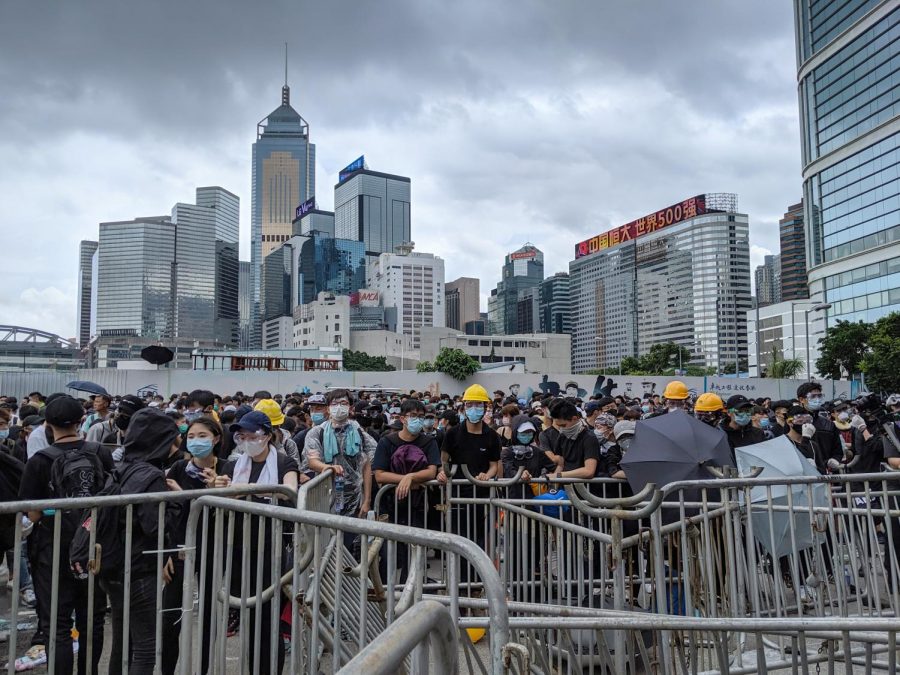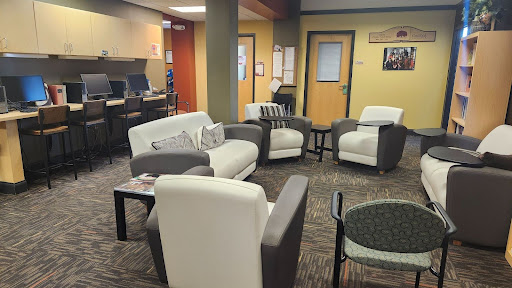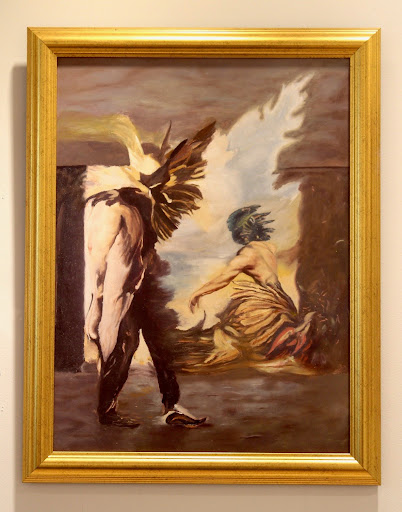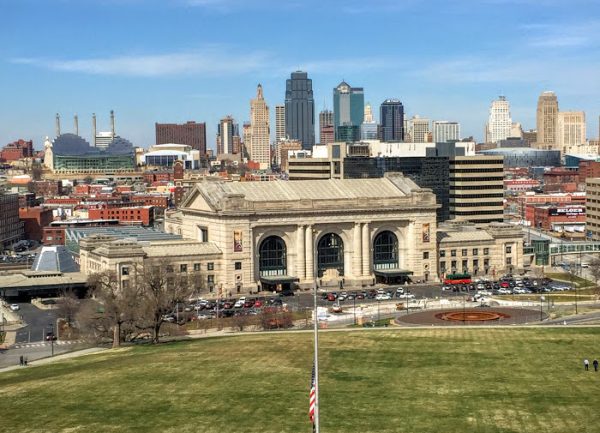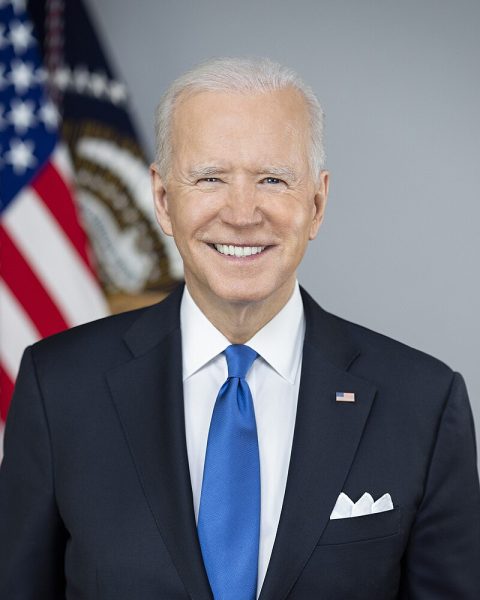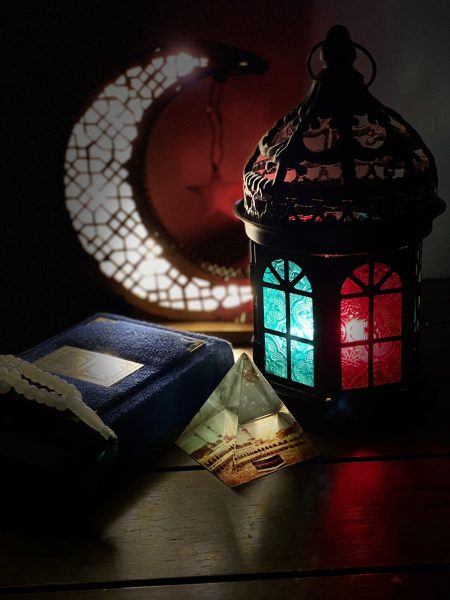Violence, protests continue in Hong Kong
Incited by an extradition bill in February, protests in Hong Kong have continued for months. Pro-democracy movements have gained international credence, with stories of police brutality surfacing each day. Although local elections took place in recent weeks, it is crucial to understand the background and objectives for the protests.
February 2019
The Hong Kong government proposed the Fugitive Offenders and Mutual Legal Assistance in Criminal Matters Legislation (Amendment) Bill 2019 in an effort to allow for the extradition of fugitives. The bill was created in response to the murder of a Hong Kong citizen by another Hong Kong citizen in Taiwan. The mandate included Macau and mainland China in addition to Hong Kong and Taiwan. Hong Kong citizens expressed their disapproval of China’s inclusion in the bill, arguing that it infringed on their autonomy as guaranteed by the Hong Kong Basic Law and that the bill would challenge the “one country, two systems” ideology.
March 2019
The first protest opposing the extradition bill occurred March 15, when five women entered the Central Government Complex, demanding termination of the legislation (Agencia EFE). The women were part of a pro-democracy group known as Demosistō, led by president Ivan Lam. Police arrived on the scene and arrested Lam, the women, and others who had been unable to enter the facility.
On March 31, the Civil Human Rights Front had its first protest march against the legislation, moving from Wan Chai to the central government building. Accoording to the Hong Kong Free Express, police reported that 5,200 people attended the event, led by organizers Claudia Mo and Lam Wing-kee.
April 2019
As reported by CNN, nine political activists were found guilty for their involvement in the Occupy Central with Love and Peace movement, which spiraled into the Umbrella Revolution. The conviction occurred on April 9 with impending prison sentences for activists like Benny Tai and Chan Kin-man.
The second protest, also a march, occurred on April 28. Demonstrators from Causeway Bay walked to the Legislative Council Complex. Afterwards, Carrie Lam, the Chief Executive of Hong Kong, announced that work with the extradition bill would proceed to curtail the release of the criminal from the Taiwan murder case (Radio Television Hong Kong).
May 2019
Two protestors, Ray Wong and Alan Li, stepped forward and revealed their refugee protection from Germany. The two had been convicted by the Hong Kong judiciary for their involvement in 2016 demonstrations, but jumped bail and fled to Germany (TIME). Germany’s migration office later confirmed this statement (The New York Times). Wong and Li became the first citizens from Hong Kong to be granted political asylum by a foreign nation. As debates over the extradition bill continued, this new information built on increasing concerns over freedom in Hong Kong.
June 2019
Dressed in all black, lawyers marched against the extradition bill in silence on June 6, going from the Court of Final Appear to the Central Government Complex.
On June 9, several members of the Safeguard Hong Kong Alliance appeared outside of the Central Government Complex in support of the extradition bill. Hours later, the Civil Rights Human Front conducted another rally opposing the bill that many estimate could have had the largest crowd since protests from the 1997 handover. Several protesters camped outside of the building overnight and clashes between them and police officers occurred.
As the second reading of the extradition bill had been ordered for June 12, thousands of civilians blocked Harcourt Road and other streets leading to the Legislative Council Complex, attempting to prevent a review of the bill. The protest escalated into a riot and 79 people, protesters and officers alive, were treated at local hospitals (Hong Kong Free Press).
Statements from Chief Executive Lam prompted a protest led by mothers on June 14 and another march from Victoria Park to the Legislative Council Complex. The government later issued a statement in which Lam apologized (South China Morning Post).
A few days after the release of activist Joshua Wong, protesters sieged the police headquarters on June 21. Ambulances were called to treat staff members. Some reports say that immediate medical treatment was prevented by demonstrators while others refute this claim.
Between June 26 and June 30, several protests occurred outside foreign consulates in Hong Kong as the G20 Summit occurred in Osaka, Japan. Activists wanted foreign powers to place pressure on China in light of the movement in Hong Kong.
July 2019
Protests grew in the following months, with different sit-ins, blockades, and marches on consecutive days.
On July 1, when the Civil Rights Human Front hosted an annual rally marking the date of the 1997 handover of Hong Kong to China, some protestors stormed through the legislative building.
After smaller protests on July 5 and 6, July 7 included the Tsim Sha Tsui march as well as unprecedented police brutality during a nighttime clash. During that incident, riot police attacked journalists and protesters alike without having warrant cards (Radio Television Hong Kong).
The Sha Tin march occurred on July 14, followed by several protests from the elderly, social workers, and hunger strikers in ensuing days. A gang attack led by several men in white shirts happened on July 21. Many compared the situation to the technique of using gang brutality to break up protests, which is observed in China.
Counterprotests were held on July 15 and July 20.
August 2019
Between Aug. 1 and Aug. 3, demonstrations occurred in the civil and medical sectors of Hong Kong, as well as blockades of the Me On Shan police station. A citywide strike occurred on Aug. 5, with several sit-ins and business closings around the territory.
On Aug. 6, a student from Hong Kong Baptist University was arrested for possessing laser pointers, sparking condemnation from the school’s community.
In addition to paper-burning protests between Aug. 9 and Aug. 14, peaceful protests occured in Tai Po and Sham Shui Po in spite of police bans. Police brutality on those days sparked other protests.
On Aug. 23, hundreds of thousands of people participated in the Hong Kong Way campaign, which emphasized the five main objectives of the pro-democracy initiatives.
The arrests of activists Joshua Wong and Agnes Chow near the end of the month sparked other protests.
September 2019
Many booed the Chinese national anthem during a World Cup qualifier, sparking several others to gather and continue the chants in other locations (The Guardian).
Marches promoting the Civil Human Right Front, anti-CCP movements and solidarity continued throughout the month.
After confrontations outside of the Mong Kok police station, protesters besieged the area on Sept. 21 and Sept. 22. Some of these events were concurrent with the Yuen Long sit-in, where people protested the closing of the MTR transport station. Police used tear gas to disperse crowds.
October 2019
Oct. 1 was the 70th anniversary of the establishment of the People’s Republic of China, which prompted widespread protests in Hong Kong. A live round was fired at student Tsang Chi-kin, leading to other demonstrations.
After Carrie Lam used the Emergency Regulations Ordinance to pass an anti-mask law, preventing people from wearing masks in public, several thousands of people gathered in Central, Kowloon, and Hong Kong Island.
During an event at the Ma On Shan shopping complex, a journalist, who was live-streaming the event, was pepper-sprayed by police.
A suspected tear gas leak caused residents of Tuen Mun to protest on Oct. 28 and 30. More than 70 people were arrested on the second day of those protests.
November 2019
A citywide strike occurred between Nov. 11 and 15. The strike included five main steps: Dawn, Daybreak, Dagian, Twilight, and Sunrise Actions. Many primary and secondary schools were closed down.
Nov. 24 was the day of district council elections, which were heavily influenced by the pro-democracy movement and saw successes. All pro-Beijing parties suffered major losses (The New York Times).

